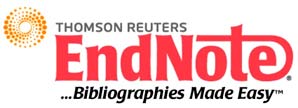RESEARCH SUPPORT SERVICE
INFORMATION MANAGEMENT
INFORMATION MANAGEMENT:
- WHAT ARE THE BIBLIOGRAPHIC MANAGERS
These computer programs greatly facilitate the work of citing as well as handling a large volume of information that can be obtained from consulting catalogs, databases or the Internet. They allow users to create their own database with the documentation that they obtain. The assistance provided by these tools, specifically bibliographic managers (PGBs), is invaluable to researchers. It streamlines the process of consulting, organizing, and ultimately publishing bibliographies, offering the added benefit of seamless transitions between different PGBs. It is also possible to export bibliographies between the various programs with ease.
MAIN FUNCTIONS AND CHARACTERISTICS OF A PGB
For a tool of this type to be called a bibliographic manager, it must perform a series of basic functions.
- All of them must allow the entry of references after searching databases and the Internet in general, as well as creating references manually.
- They will be implemented so that folders or collections can always be created and documents organized.
- Another essential functionality of a PGB is the publication of references in different styles.
- They are an invaluable aid for in-text citation while writing a document, interleaving citations, generating footnotes and then the final bibliography
- PGB’S SHARE A NUMBER OF BASIC FUNCTIONS
- Collect.
The database should be populated with information automatically through individual or multiple captures from a metadata reading mechanism. This information can be sourced from the DOI, ISBN or manually by filling in the multiple fields needed to reference the bibliographic resources. - Organize.
Once resources have been added to the library, it is important to organize them in a way that allows for easy future retrieval. This can be done through the use of folders or groups. - Quote.
This software is ideal for writing articles and research, as it enables users to quote bibliographic resources directly within the text. It also facilitates the creation of bibliographic references and bibliographies with minimal effort when integrated with word processors. - Collaborate.
The software enables users to access the library remotely and, with a user account, to utilize certain social functions such as sharing collections (which can be public or restricted to a group of users). The platform allows users to create collaborative groups and share collections.
BIBLIOGRAPHIC MANAGERS:

This bibliographic reference management software is designed to assist researchers, educators and students in searching, organizing and sharing bibliographic references, creating bibliographies and writing academic papers. It is available via the Web of Science portal. We are pleased to inform you that UFV users can access this software free of charge thanks to the FECYT national license.

This free software program enables users to manage bibliographic references and citations in an open and free manner. Zotero Standalone is compatible with the Firefox browser, but users can also access it via Chrome and Safari. https://www.zotero.org/

It is an open-source reference manager that operates concurrently with both a desktop and a web version. Mendeley is a free, multiplatform solution that combines the functionality of a classic reference manager with the capabilities of a social reference manager. The software includes a comprehensive statistics module that provides valuable insights, such as the most accessed documents in each category and a detailed profile of the researcher, showcasing their publications classified by document type. https://www.mendeley.com
The manager has been most successful in developing the function of collaborating, discovering and disseminating documents. They have also been able to create a network of colleagues, which they have named “the groups,” or participate in a group of interest. Mendeley’s statistics module is an extremely effective tool for analyzing research trends and provides a valuable additional resource alongside the impact factor. Mendeley has also effectively implemented the option to update one’s profile with web-based publications, categorized by document type. This feature could be used to link the profile to another website, for instance.
HOW TO PREPARE A BIBLIOGRAPHIC REFERENCE.
Each institution, publishing house, journal, faculty, etc. prefers to follow one or another standard in terms of bibliographic citations when accepting any research work, working paper, book, article, class work, etc., and authors should follow these recommendations.
The most commonly used styles are: ISO, Vancouver, APA, Harvard or Chicago standards among others.
See this resource http://uc3m.libguides.com/guias_tematicas/citas_bibliograficas/inicio of Universidad Carlos III in which they explain step by step how to prepare your citations and references in APA, Chigago, IEEE and UNE-ISO 690 formats.
If you want more information on bibliographic styles see:
ISO 690 and 690-2 Standard. http://uc3m.libguides.com/guias_tematicas/citas_bibliograficas/une-iso-690
APA Standard. https://apastyle.apa.org
Vancouver Standard. https://es.wikipedia.org/wiki/Estilo_Vancouver
ICMJE International Committee of Medical Journal Editors. http://www.icmje.org/
PDF: Uniformity Requirements for Manuscripts Submitted to Biomedical Journals.




